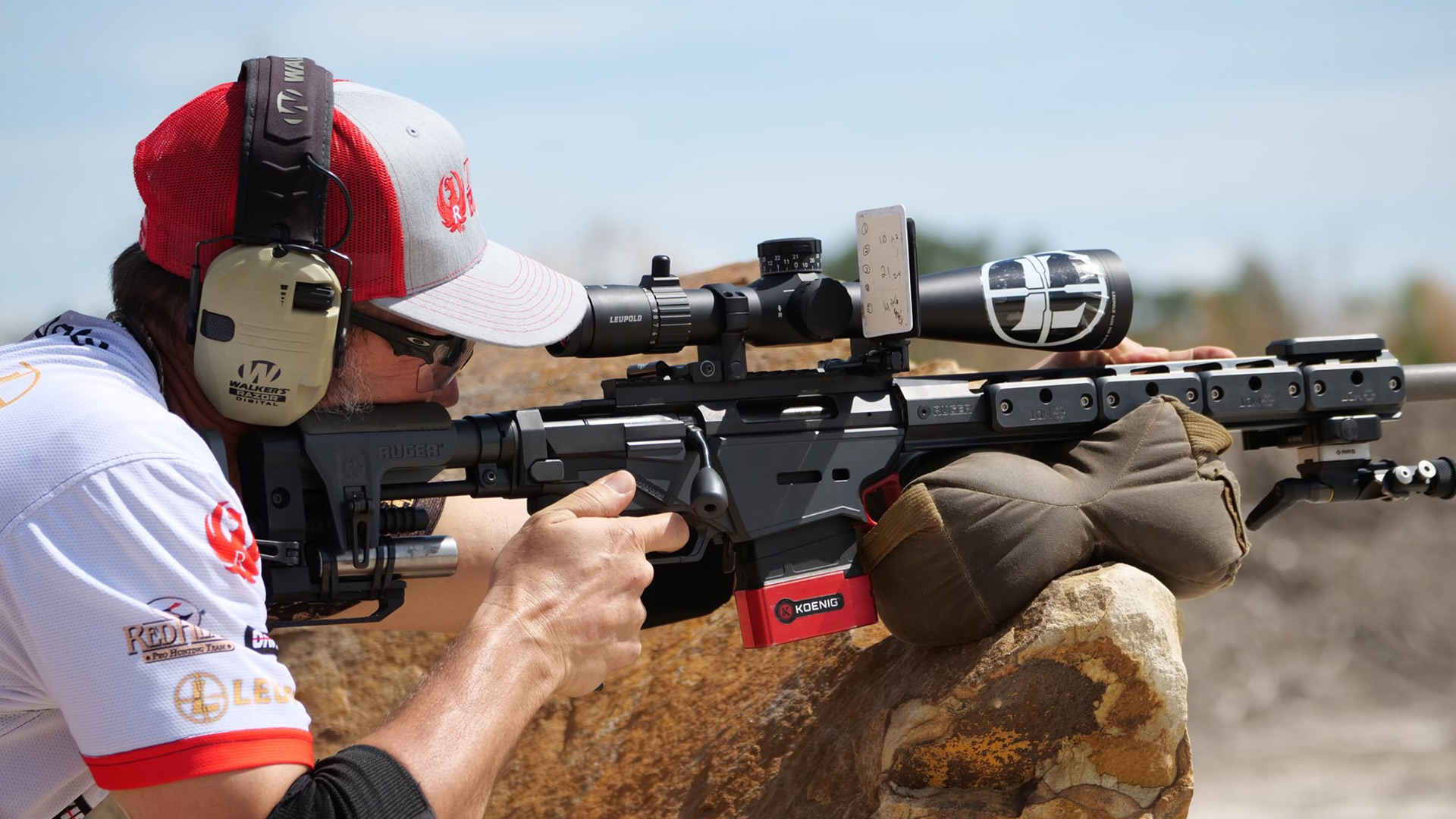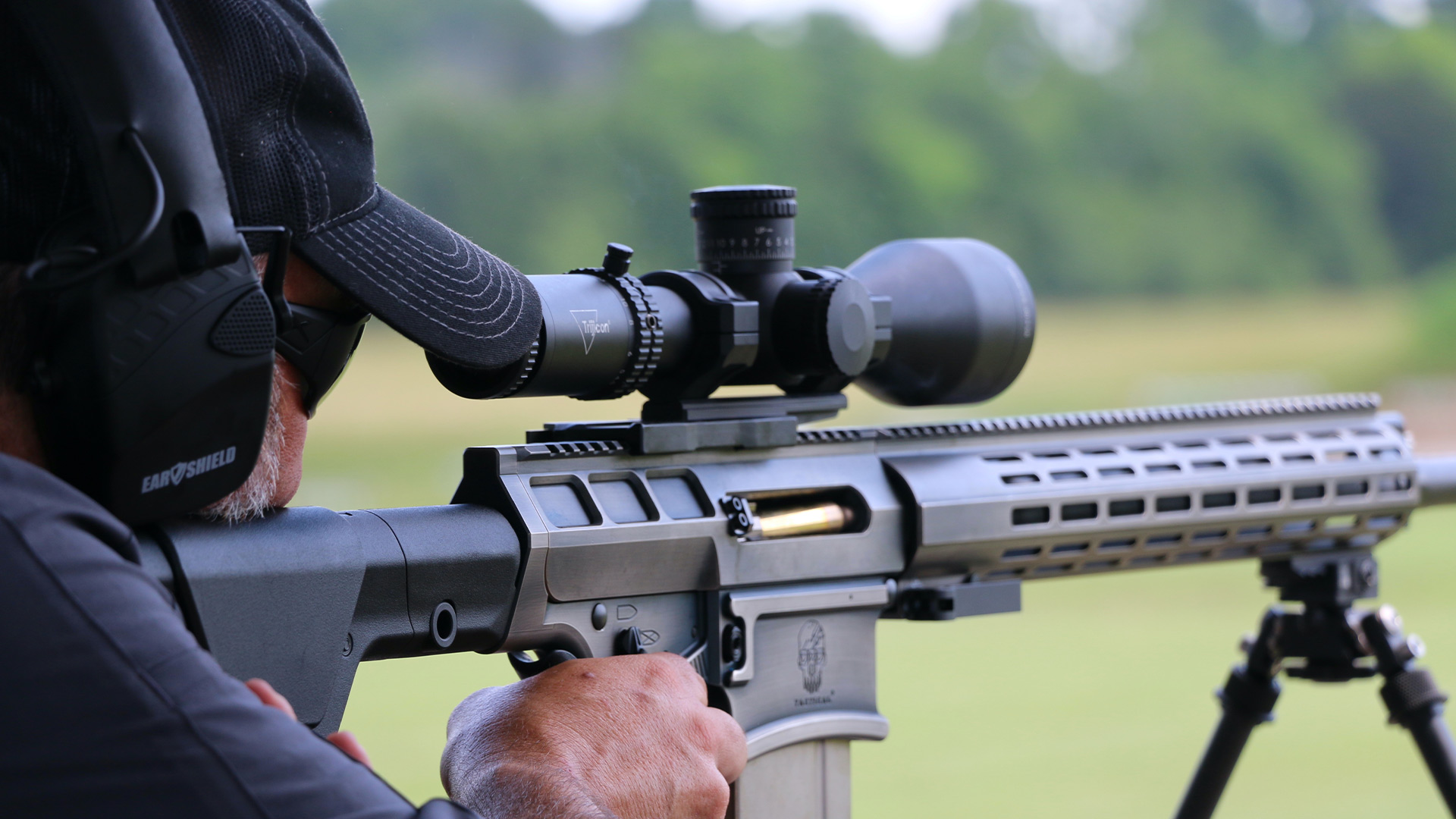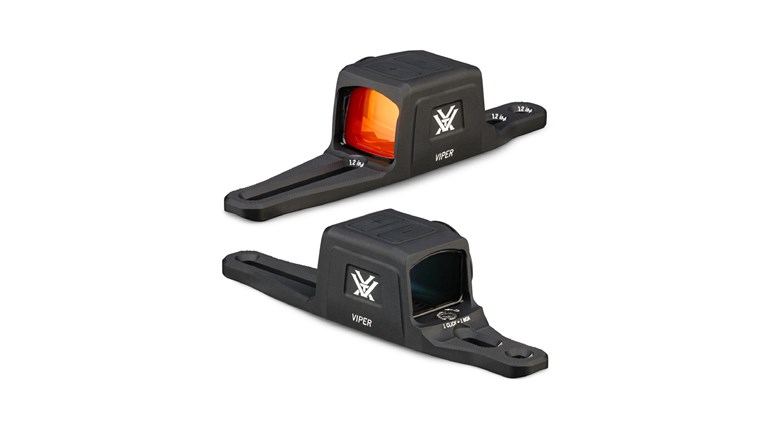
Many firearms and shooting enthusiasts have dreamt of chasing their Precision Rifle Series (PRS) dreams. Doug Koenig, who’s competed and won championships in numerous shooting disciplines, has also won the PRS Production division, plus a bunch of regional matches, and says that dream is within reach. He knows PRS as well as anyone, and he’s sharing some of his best advice. Here’s much of what you need to know, from just getting started, to getting an affordable rig within the PRS production rules, to being successful in the sport.

1. LEARN THE RULES
As with any competition, understanding the rules is a must. The same holds true for PRS. “There really aren’t a lot of rules. Honestly, it’s more basic safety fundamentals in the rules,” Koenig said. “There aren’t a lot of restrictions. There are three or four major points, but aside from that, the sport is wide open and straightforward. They have a 180 rule that you have to be aware of. Whenever you’re moving with the gun, the bolt is open and back. Basic safety stuff.”
As mentioned, most rules are logical competition-based guidelines. Others are safety related. Always put safety first. (View the 2021 PRS rules here.)

2. UNDERSTAND PRS BASICS
There are different divisions to consider, including Open, Tactical and Production. “Open is Open — it’s any gun, optic or caliber,” Koenig said. “The sky is the limit. In Tactical, you have to shoot .308 Win. or .223 Rem. And Production is a factory-produced rifle. The manufacturer who produces that rifle has to make at least 50 per year and be considered a manufacturer. And the MSRP has to be under $2,500. The optic also has to be under $2,500. There’s a price limit so there isn’t an equipment race.”
The PRS structure is straightforward and easy to understand. Koenig says production is set up in a manner so that it’s technically supposed to be for true production guns, such as Ruger, Savage, Tikka, etc. There has been room made for MPA to build a production gun as well.
“Those guys are manufacturers, so you technically don’t build out a production gun,” he said. “Because what they don’t want, and they’ve had a few issues over the past few years, is guys putting guns together with parts that technically come under the price limit but it’s not really a manufacturer. But the whole key is buying a gun off the shelf, shooting it and competing.”

3. CHOOSE THE RIGHT EQUIPMENT
Given that you can’t just buy whatever you want to compete in this division, it’s important to do your research and determine what is best for your situation. The good news is you can find quality stuff, even within the confines of the PRS rules.
“That’s the idea behind why I’m doing it,” Koenig said. “I get asked why I’m not shooting open. No. 1, at Ruger, we don’t build an open gun. We build an RPR gun (Ruger Precision Rifle). You can go buy it at Bass Pro Shops or another gun store. I shoot a factory gun. My whole idea is that I’m trying to show that you don’t have to spend $5,000 to be competitive. The factory guns shoot great. Some of them might not have all the bells and whistles. It might not be a custom barrel. But I haven’t missed a target yet that was because of my gun. I’ve blown the wind call or done something stupid.”
This year, he’s shooting the new Ruger Custom Shop RPR in 6 mm Creedmoor. This gun is a little more expensive than its predecessor. The latest model has a TriggerTech trigger and stainless-steel barrel. And of course, he tops his gun off with the Leupold Mark 5 with the PR2 reticles. This scope is built with long-range shooting in mind. You don’t have to use these, of course, but the point is to find a rifle-optics combo that works well for you.
4. FINE-TUNE YOUR GUNS
While most shooters’ skills don’t exceed the ability of the firearm, it’s true that you are only as good as your gun allows you to be. Sight it in and learn it. Work on your equipment and know it well. Koenig says to make sure you have all that dialed in and to know what your rifle is going to do from 100 to 1,400 yards. That’s very important.
That said, don’t think you have to go to the extreme right out of the gate. “I’ve been shooting a factory RPR and factory ammo,” Koenig said. “I’ve just been reloading for the past few months. But you don’t have to do that. Get into it as inexpensively as you can to start and see how you like the sport.”

5. HONE YOUR SKILLS
The same holds true for yourself. Shooters who don’t practice and get better aren’t likely to perform well. Your gun must be lined up and performing well, but so must you. The entire process must become second nature. Become a better shot, and more knowledgeable of the craft, and you’ll certainly place higher in each match in which you compete.
“You don’t need to spend a lot of money,” Koenig said. “If you have $10,000 of disposable income, spend $4,000 on your rifle and optics, and $6,000 on ammo and go shoot. You have to be able to afford to practice and learn your equipment.”
6. ADJUST TO CONDITIONS
While other shooting sports aren’t impacted quite as much, Koenig says PRS is greatly impacted by conditions. “Everything else that I’ve done, whether it’s sporting clays or Bianchi, it’s not really driven by the conditions,” Koenig said. “Wind and stuff like that doesn’t have an effect when shooting pistols. But here, if you’re off by one m.p.h. on your wind call on a one-MOA target at 500 yards or further, you’re missing. It’s been a steep learning curve for me trying to accept and learn that.”
But once you learn these skills, long-range shooting isn’t so daunting. Things begin to click, and knowing how to hold for the yardage, windage, as well as humidity levels, earth rotation, and other factors, unlocks your potential as a competitor.

7. LEARN TO LOVE PRESSURE
Many shooters find their way into the PRS Production division. Fewer stick around and become long-term competitors. One of the major differences between these two groups is the ability to perform under pressure. With difficult stages, a running clock and a long list of skilled opponents, it’s not easy. But learning to block out these distractions and more is an essential part of making it to the top.
8. START SMALL AND EXPAND
One of the biggest misconceptions as that you must start out with the big guns. That’s not true. “For the new shooter, I’m not saying they should jump right into the center-fire part of the game,” Koenig said. “There’s a whole rimfire series to PRS and NRL (National Rifle League). For someone who’s never shot in competition, that’s a great place to start. You’re getting all the work in. It’s less expensive. There is a lot more availability to shoot these matches. They’re all over the place.”

9. GET MATCH EXPERIENCE
Regardless of whether you start out in the rimfire or center-fire series, you need match experience. Going to as many of these as possible increases your skills, and more importantly, your confidence.
“There is no substitute for match experience,” Koenig said. “Try to shoot as many locally as possible. You don’t have to go shoot all the two-day matches. There are plenty of one-day matches you can get involved in. You can learn a lot about positions, how to use the bags, reading wind, etc.”
10. READ THE STAGE BRIEFS
Once ready to compete, one of the best things you can do is read the stage briefs. Stay within the rules regarding your preparation but know what you’re getting into. Don’t go in completely blind if you don’t have to do so. Visualize yourself moving through the stage with confidence and effectiveness. Prepare yourself mentally. Trust in your abilities. See yourself succeed.

11. PREP YOUR GEAR (EVEN BETWEEN STAGES)
Preparing yourself physically and mentally are important. Preparing your gear is equally vital to success. Keep them clean and in working order. When possible, do an equipment checkover — even between stages.
12. WORK TOWARD THE GOAL
Those who want to become the best must prove themselves against some of the most talented shooters in the world. The only way to get to the big show is to work your way up through the ranks, though.
“Shoot matches to qualify for the finale to be able to win the finale against the other top production guns,” Koenig said. “To me, it’s about having good overall finishes. I’ve been averaging top 15–20 overall shooting a production gun. I’m proud of that, but there’s still a lot of room for me to learn and get better.”
13. HAVE FUN
Finally, just enjoy yourself. If you aren’t having fun, why are you doing it to begin with? “This is a great way to hone your shooting skills,” Koenig said. “You can do it all year long. And you get to hang out with great people at matches. Take your family along. It’s a blast. Have fun.”
Read more: Gear For PRS .22 Competition


































